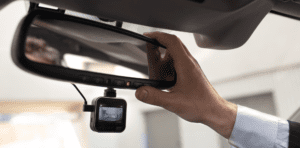Compare cheap car insurance
✔ Compare cheap car insurance quotes
✔ Over 110 insurance providers
✔ Get a quote in minutes
✔ Save up to £504*
Driverless cars, potentially the next major innovation on the UK’s roads, are a topic of much debate. Are they a genuine breakthrough or merely a fanciful notion?
The effectiveness of their technology is a key question. Additionally, their impact on the Highway Code and car insurance is worth exploring. Let’s delve into these aspects…
What is a Driverless Car?
Definition of Driverless Cars
A driverless car, also known as a self-driving car, is an automated vehicle capable of navigating from one location to another without any human intervention in steering or control. These vehicles are designed to travel safely from point A to point B, completely independently.
How They Operate
The core of a driverless car’s functionality lies in its artificial intelligence. This advanced AI system mimics human-like responses to various road situations. Driverless cars are often referred to as autonomous vehicles due to their ability to perceive and understand their surroundings without human input.
The Future of Travel
While it may seem like a concept from science fiction, the future holds the possibility of drivers lounging and perhaps watching TV while commuting. The notion of being a passive passenger in your own car, while it safely takes you to work, is becoming increasingly conceivable.
How much can you save on your car insurance?
How Do Self-Driving Cars Work?
Driverless cars are equipped with advanced GPS systems to determine their destinations. Additionally, they incorporate a comprehensive array of sensors and cameras.
These technologies enable the car to detect and interpret its surroundings, including other vehicles, pedestrians, animals, traffic lights, and road markings.
As a result, the car can automatically brake, accelerate, or steer in response to various situations, ensuring a safe journey.
Varied Technologies Across Manufacturers
The technology used in driverless cars can differ significantly among manufacturers. Rather than relying on rigid, pre-programmed instructions, these vehicles are designed to make intelligent decisions based on accumulated experiences. This approach allows for more adaptable and sophisticated responses to real-time road conditions.
Human Interaction and Future Developments
Currently, most driverless cars being tested include manual controls for a human driver to intervene if necessary. However, as the technology evolves, the necessity for human control may diminish.
Furthermore, there’s potential for driverless cars to communicate with each other, enhancing traffic flow and reducing the likelihood of accidents. This inter-vehicle communication could be a pivotal development in future transportation systems.
How much can you save on your car insurance?
Why Do We Need Autonomous Cars?
Enhancing Safety
One of the most significant benefits of autonomous cars is the potential to greatly improve road safety.
Human error is a factor in over 94% of accidents, so by eliminating this variable, driverless cars could drastically reduce accidents. However, this is contingent on the cars performing their functions correctly.
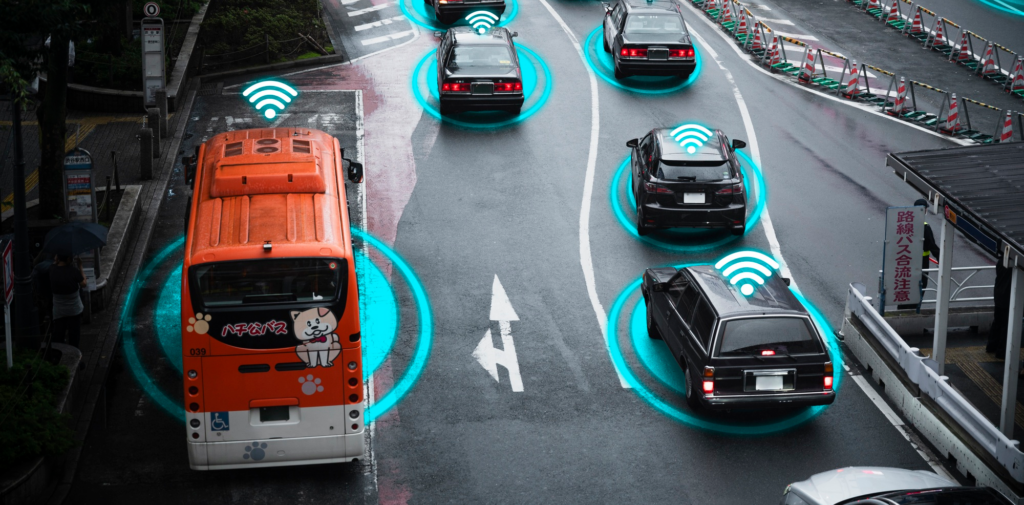

Saving Time
Consider the time-saving aspect: the average driver undertakes approximately 300 trips annually. Imagine the possibilities if, during these trips, you could eat breakfast, meditate, or prepare for an upcoming meeting while your car takes care of the driving. This could revolutionise how we perceive and use travel time.
Promoting Greener Travel
Driverless cars have the potential to make travel more environmentally friendly. They could communicate with each other, optimizing their routes based on real-time traffic information.
This coordination can minimise congestion and the emissions from idling engines stuck in traffic jams, contributing to a greener environment.
Enhancing Rural Connectivity
Autonomous vehicles could greatly benefit rural communities by providing on-demand services that connect seamlessly with public transport.
This would significantly improve access and mobility for people living in less connected areas.
Improving Accessibility
Another crucial advantage is the increased accessibility they offer. Many individuals, especially the elderly and those with disabilities, face challenges with independent mobility.
Others might not feel comfortable driving. Autonomous cars can enable these groups to travel independently, fostering social connections and opening up opportunities for interaction and community engagement.
How much can you save on your car insurance?
What are the Levels of Autonomous Driving in Driverless Cars?
Understanding the Classification System
To differentiate the various types of self-driving vehicles, the American standards organisation SAE International has developed a classification system. This system categorises the vehicles into six distinct levels of autonomy.
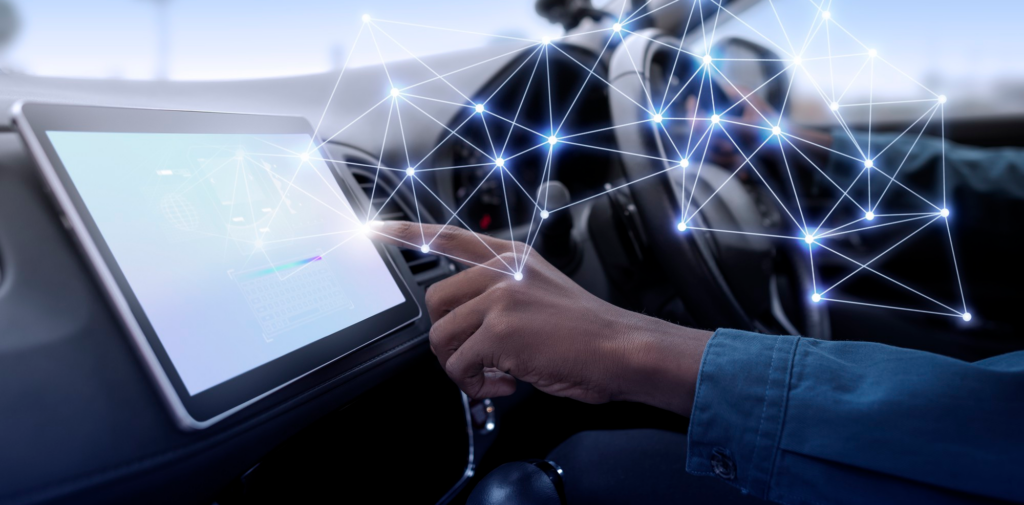

Level 0: No Driving Automation
At this level, all driving tasks are entirely performed by the human driver, with no automation involved.
Level 1: Driver Assist
In Level 1, most driving tasks are still under the driver’s control. However, the vehicle can automatically handle one aspect of driving, such as cruise control or lane assistance.
Level 2: Partial Automation
At this stage, the car can take charge of several driving functions. Yet, the driver needs to remain alert and engaged with their surroundings. Features at this level include automatic emergency braking and lane assistance.
Level 3: Conditional Automation
Here, the vehicle can manage almost all driving tasks, but only in specific environments, like on motorways and for limited periods. The driver must be ready to resume control if necessary.
Level 4: High Automation
At Level 4, the vehicle can drive itself without requiring any input from the driver. It’s capable of operating autonomously in most environments, but not in every situation. A human driver is still necessary on board.
Level 5: Full Automation
A Level 5 vehicle represents the pinnacle of autonomy. It requires no involvement from the driver, handling all driving tasks under any conditions.
This level of technology understands every scenario, including traffic jams, and such vehicles wouldn’t need a steering wheel or pedals.
How much can you save on your car insurance?
What are the Risks of Driverless Cars?
Task Allocation Challenges
The Royal Society for the Prevention of Accidents (RoSPA) highlights several risks associated with automation in driverless cars. A primary concern is the task allocation between the car and the human driver.
There is a risk that easy driving tasks might be automated, leaving the more complex and challenging tasks for humans. This could lead to a mismatch in the driver’s abilities and the demands of the situation.
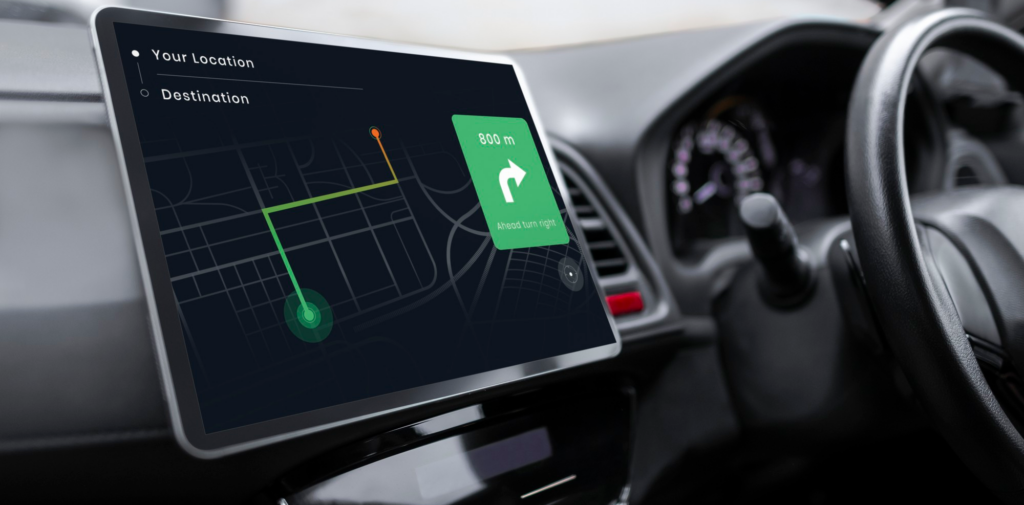

Issues with Driver Disengagement
Another significant risk is disengagement. If drivers are not regularly practicing their driving skills due to over-reliance on automation, they may become slower and less skilled. This decline in proficiency could be problematic if they need to intervene in an emergency.
Cognitive Risks
The issue of cognition is also a concern. If drivers are not continuously engaged in driving, they might become bored and distracted. This lack of attention can be particularly dangerous during critical moments when their full focus is required.
Control and Intervention
Finally, there’s the matter of control. It’s crucial for drivers to understand when and how to intervene and take control of the vehicle. Ensuring that drivers are adequately informed and trained to handle these situations is vital for the safe operation of driverless cars.
How much can you save on your car insurance?
What Rules Apply to Driverless Cars?
Testing and Human Supervision
The Department for Transport (DfT) currently permits the testing of driverless cars on public roads in the UK. However, this comes with the stipulation that there must be a human operator present, ready to take over control of the vehicle if necessary.


Changes to the Highway Code
In April 2022, following public consultation and a review by Britain’s law commissioners, the DfT implemented changes to the Highway Code. These modifications were made to better accommodate the integration of autonomous vehicles into daily traffic.
Liability in Accidents
A significant aspect of the new rules is the shift in responsibility in the event of an accident involving an autonomous vehicle. Under these proposals, human drivers will not be held accountable. Instead, insurance providers will bear the liability for claims in such situations.
Use of In-Car Entertainment
Another notable change is that drivers will be allowed to watch TV shows and films on built-in screens while using self-driving cars, but only at certain speeds. However, the use of hand-held mobile phones will remain illegal, even in self-driving mode.
Requirement for Driver Readiness
The rules also emphasize that users must be prepared to take back control of the vehicle if prompted. This requirement is crucial for ensuring safety during the transition phase between automated and manual driving.
Future Regulatory Framework
A comprehensive regulatory framework for the operation of driverless cars in the UK is expected to be fully established by 2025.
This framework will provide detailed guidelines and standards for the safe integration of autonomous vehicles into the transportation system.
How much can you save on your car insurance?
Are Self-Driving Cars Safe?
Incidents Involving Autonomous Vehicles
There have been several notable crashes involving driverless vehicles, with some resulting in fatalities. These incidents have raised concerns about the safety of autonomous cars.
Comparative Safety Statistics
Despite these incidents, statistics suggest that autonomous cars are generally safer than traditional vehicles driven by humans.
These cars strictly adhere to road rules and are not susceptible to human weaknesses like fatigue or distraction.
However, there are still significant challenges regarding whether driverless cars can safely navigate public roads. Some of these include:
- Recognising hand signals from police officers directing traffic.
- Differentiating between potentially dangerous debris and harmless litter on the road.
- Detecting potholes.
- Responding to temporary traffic lights.
Improvements Over Time
As autonomous vehicles clock more miles, there are signs that the technology is becoming safer. The rate of incidents is decreasing, indicating advancements in autonomous driving technology.
Cybersecurity Concerns
A major safety concern is the risk of driverless cars being hacked by malicious actors. While current models have security measures in place, hackers often find ways to breach systems over time.
It’s crucial for cybersecurity experts to continually innovate to stay ahead of potential threats. One potential solution being explored is the use of biometric data, such as fingerprint and iris scanning, to enhance security.
How much can you save on your car insurance?
When Will Driverless Cars Be Available in the UK?
Government Plans and Investments
The UK government has announced an ambitious plan aiming for self-driving vehicles to be on UK roads by 2025. This vision is supported by a significant investment of £100 million, which includes £34 million allocated for safety research.
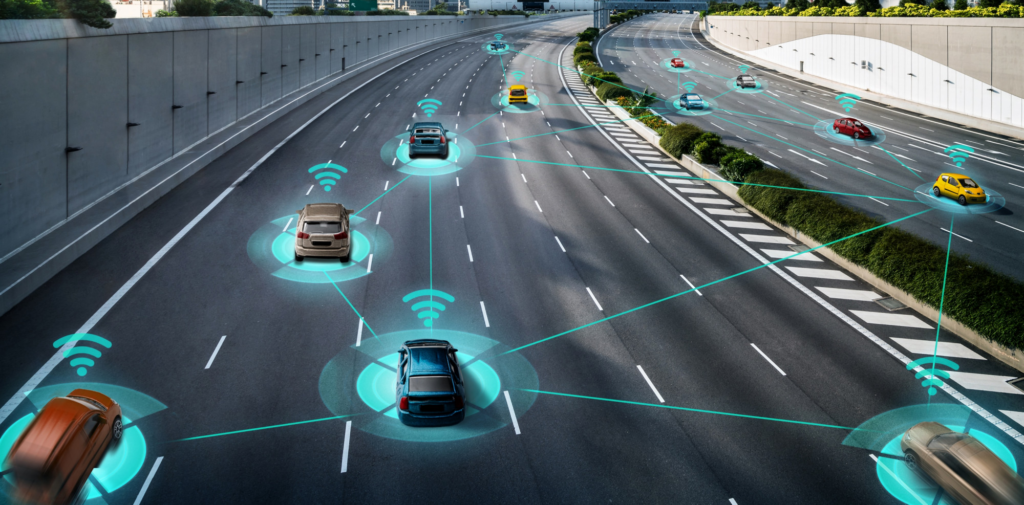

Role of the Insurance Industry
The motor insurance industry plays a crucial role in the development of autonomous vehicles. Organisations like the Association of British Insurers (ABI) and Thatcham Research are deeply involved in setting safety standards and regulations. They are also focusing on the advancement of safety technology in these vehicles.
Safety Standards and Realistic Timelines
Both the ABI and Thatcham Research emphasize the need for clear safety standards before introducing driverless vehicles to the UK market.
Although the government targets 2025 for their availability, it’s acknowledged that this may be optimistic.
It could realistically take a few more years before fully autonomous cars become widely accessible in the UK.
Existing Autonomous Safety Features
Meanwhile, several driver assistance features that form part of driverless technology are already present in some vehicles. These include:
Automatic Emergency Braking (AEB): Now a standard feature in most family cars, AEB senses imminent collisions and automatically applies the brakes. Some systems can also detect pedestrians and animals. Thatcham Research notes that AEB has reduced vehicle collisions by 38%.
Adaptive Cruise Control (ACC): This feature maintains a set distance from the car ahead, adjusting speed to keep pace with traffic and prevent getting too close to other vehicles.
Lane Assist: This technology helps steer the car back into its lane if it begins to drift, which could happen due to inattention or drowsiness.
Parking Assist: Many new cars are equipped with this feature. Using sensors and cameras, it helps park the car, scanning the space and steering into it if suitable, while the driver controls the pedals.
How much can you save on your car insurance?
How Will Driverless Car Insurance Work?
Legislation in Place
Although driverless cars are not yet widespread on UK roads, the Automated and Electric Vehicles Act 2018 has already set the groundwork for their insurance. This act provides clear regulations specifically tailored for the insurance of autonomous vehicles.
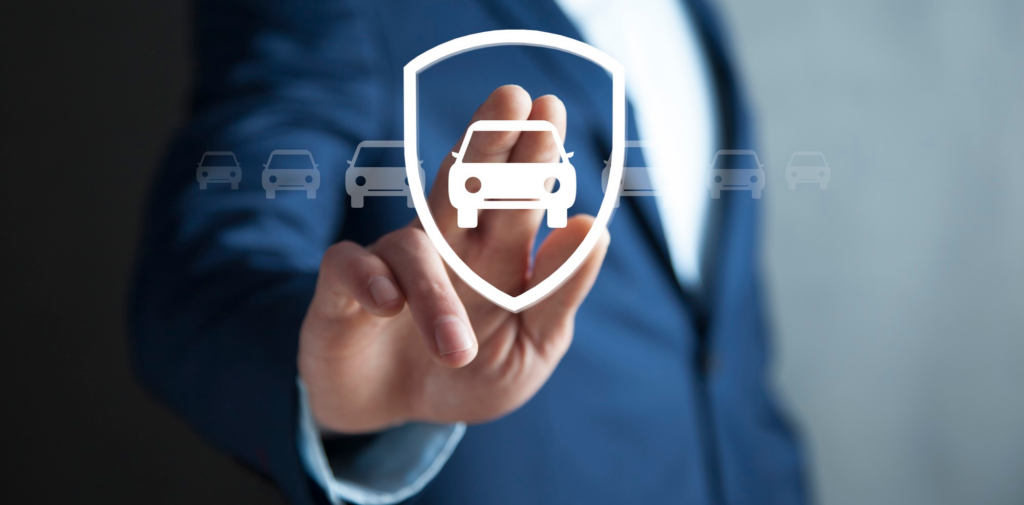

Insurance for Automated Vehicles
According to the legislation, automated vehicles with proper insurance will be covered for accidents occurring while the car’s artificial intelligence (AI) is in control. If a driverless car is not adequately insured, the responsibility falls on the car’s owner.
Software Compliance and Insurance Validity
The act also addresses the importance of the vehicle’s software. Insurance coverage will be void if owners make unauthorised modifications to the software or fail to install essential, safety-critical software updates.
Consideration of Automation Levels
Insurance providers are likely to take into account the different levels of automation when determining premiums for driverless car insurance.
This consideration will reflect the varying risks and responsibilities associated with each level of automation.
Future of Autonomous Car Insurance
The exact nature of insurance for fully autonomous cars remains uncertain at this stage. As the technology and its usage evolve, so too will the insurance products designed to cover these vehicles.
In the meantime, while you’re still driving a conventional car, it’s a good idea to compare and find the best deals for your current car insurance.
How much can you save on your car insurance?
How Much Will It Cost to Insure a Driverless Car?
Current Uncertainty
As driverless cars are not yet fully legalised on UK roads, it’s impossible to determine the exact cost of insuring such vehicles at this time.
The pricing structure for driverless car insurance will become clearer once these cars become more integrated into everyday traffic.


Potential for Reduced Costs
There is a possibility that insurance costs for self-driving cars could be lower than those for traditional vehicles. This potential reduction is based on the expectation that autonomous cars, by minimising human error, will lead to fewer accidents.
If the assumption of reduced accidents holds true, insurance providers might offer lower premiums to owners of driverless cars.
This would be a form of reward for the decreased risk associated with operating vehicles that rely on advanced technology for navigation and safety.
How much can you save on your car insurance?
What’s Happening Elsewhere with Driverless Cars?
Progress in the USA and China
In countries like the USA and China, there have been significant advancements in the field of driverless cars. Leading companies such as Google and Tesla are at the forefront of this technology.
These organisations have been actively testing autonomous vehicles on public roads, with some trials even proceeding without a human safety driver. Additionally, there are rumours that Apple is developing a fully autonomous self-driving car.


Waymo’s Driverless Taxi Service
A standout development in this area is Waymo, an autonomous driving brand under Alphabet, which is Google’s parent company. Waymo introduced a driverless taxi-hailing service in Phoenix, Arizona.
In March 2022, this service expanded to San Francisco, representing a significant step forward in the practical application of driverless car technology.
Current State and Future Outlook
Despite these impressive developments, fully autonomous cars are not yet available for consumer purchase. The technology is still evolving and has some distance to cover before becoming a regular feature on roads.
However, the consistent progress in this technology indicates that it’s gradually integrating into everyday transportation systems.
The prospect of seeing cars without steering wheels on our streets seems to be a matter of time, marking a transformative phase in how we think about and use cars.







